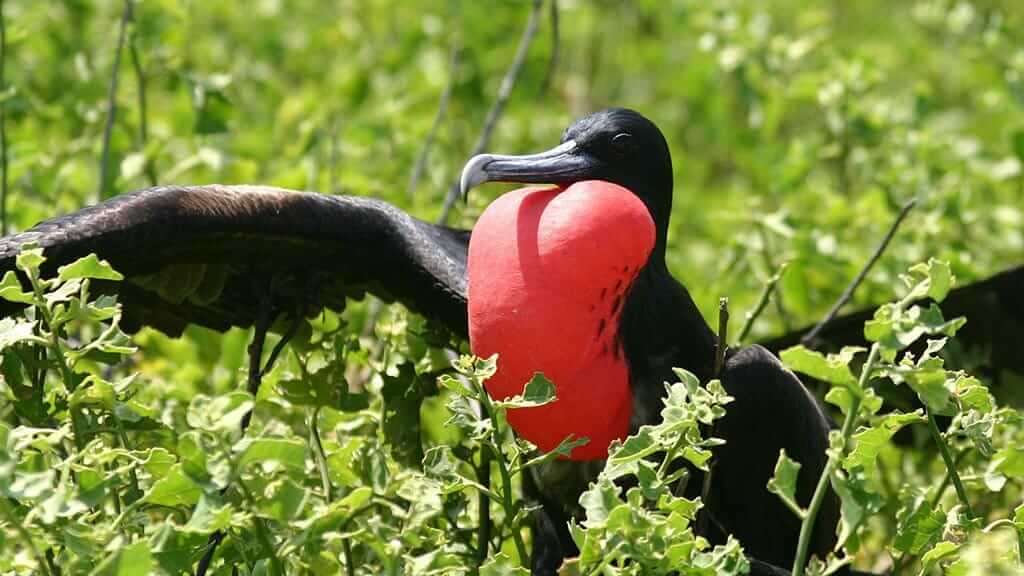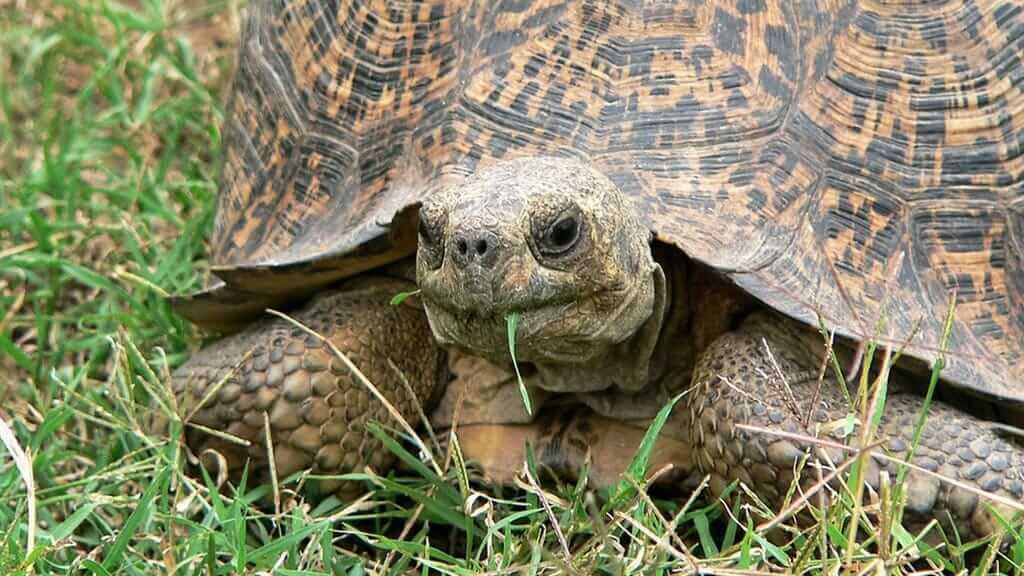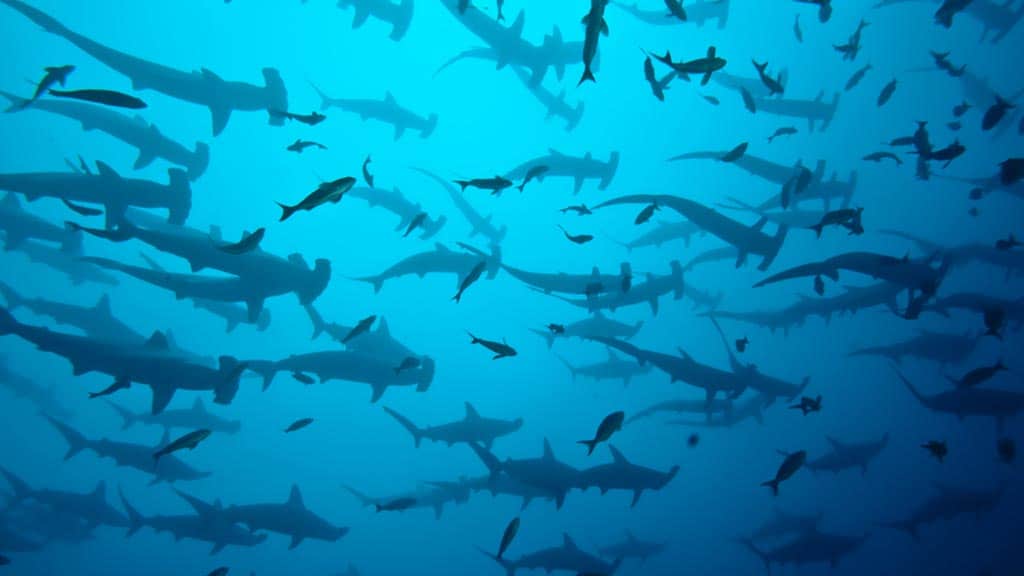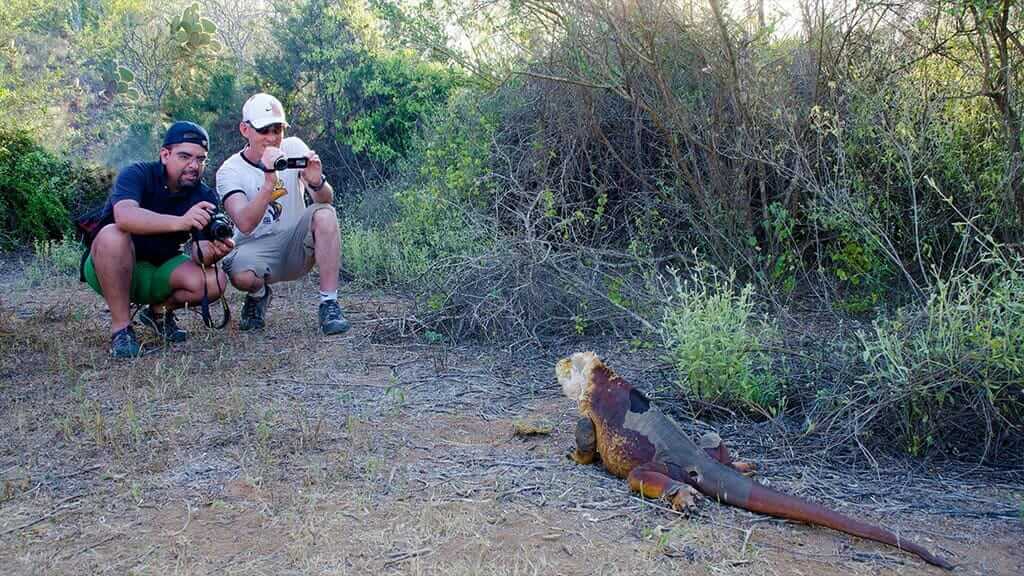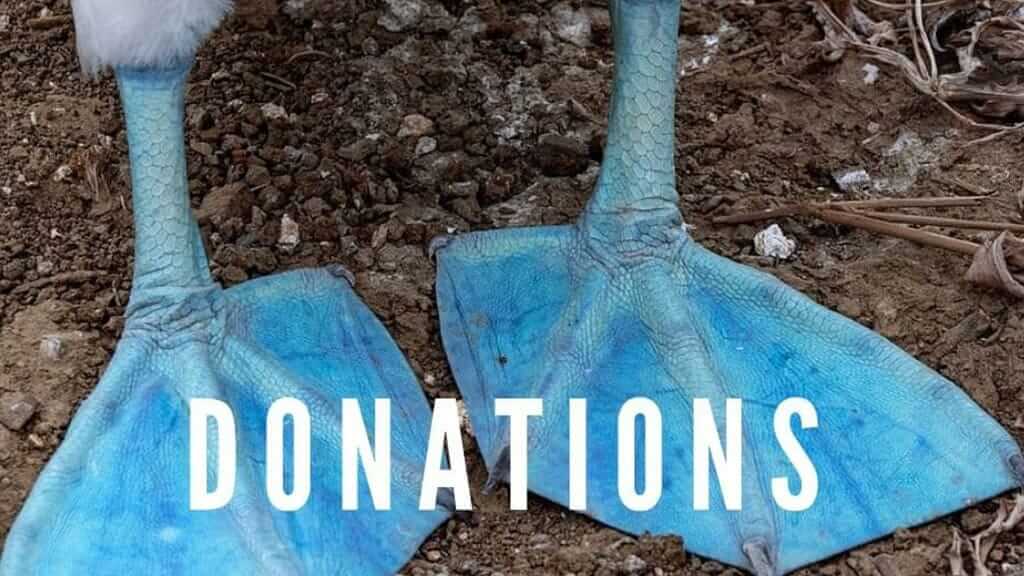Galapagos Islands Conservation
The Galapagos islands are known the world over for biodiversity of unique flora and fauna. But the fragile Galapagos ecosystem faces threats from invasive species, habitat loss, overfishing and other destructive human behaviors. The good news is that there are some wonderful Galapagos Conservation projects underway that are making a positive difference.
Galapagos islands conservation is a big deal and every effort makes a small difference. Galapagos conservation is focused on everything from breeding programs to protect endangered Galapagos species, to eradication of human-introduced species, recycling programs and cleaning up the ocean. For tourists too, we can take easy steps to reduce the environmental impact of our Galapagos visit and help conserve the islands for future generations.
Keep reading to learn more about Galapagos Islands Conservation. Which conservation projects are happening now at the archipelago? Which Galapagos birds and animals most need our help? Plus how you can make a difference to one of the most biodiverse places in the world.
SECURE YOUR GALAPAGOS TRAVEL
Get a FREE personalised quote todayHow can we protect the Galapagos islands?
Today many iconic species of the Galapagos Islands are unfortunately under threat.
CRITICALLY ENDANGERED: 7% of Galapagos species, including Mangrove Finch, Floreana Mockingbird, Waved Albatross, Galapagos Petrel & Giant Tortoises from Española, Fernandina, Sierra Negra (Isabela), Santa Cruz & Santiago islands.
ENDANGERED: 9% of species, including Flightless Cormorant, Galapagos Penguin & Marine Iguana.
VULNERABLE: 23% of species, including Galapagos Sealion & Fur Seal.
Clearly this is not a sustainable situation for one of the world’s most important wildlife hotspots. But the tide is slowly turning. Important scientific studies and conservation projects are already underway, run by a diverse mix of organizations such as the Galapagos National Park, the Charles Darwin Foundation, Galapagos Conservation Trust, as well as various government agencies, international non-profits, and private organizations.
Preserving, protecting, and undoing human damage in the Galapagos Islands is an ongoing battle.
Galapagos Conservation: Wildlife Protection Projects
Here are two great examples of successful conservation projects to protect endangered Galapagos species.
1. Galapagos Tortoise Conservation
The emblematic Galapagos Giant Tortoise has been in trouble since the first human occupation of the islands, when whalers hunted them as food, and introduced feral goats upended their habitats, and overtook their food sources. Some tortoise species, like those of Santa Fe island and Pinta, are already extinct, while other populations are under threat and dwindling.
The Charles Darwin Research Station on Santa Cruz Island is home to the Fausto Llerena Breeding Center. Here Galapagos Giant Tortoise hatchlings are raised until they reach maturity, and can safely be released into the wild without risk of predation, helping to restore tortoise populations to healthier levels. Similar breeding centers have opened on Isabela & San Cristobal islands, and all are open to the public to raise conservation awareness and funds.
Santa Fe island has now been turned into a notable success story. In 2015 & 2017, the Giant Tortoise Restoration Initiative released juvenile tortoises into the wild. Recent visits to the island discovered that the population is doing well, and another release is scheduled for the coming years.
2. Galapagos Penguin Conservation
The Galapagos Penguin is an unusual creature, designed for cold Antarctic waters, yet happy to make the warm equatorial Pacific Ocean it’s home. Today the poor penguin finds itself on the endangered species list, after El Niño years when extreme weather conditions caused a rise in sea temperatures, food dwindled, and the penguin population decreased by 60%.
Encroaching of nesting grounds, or the lack of adequate spaces, also contribute to the size of the penguin population. Over the years traditional nests have eroded, or other species like the Marine Iguana have taken up residence.
Dr. Dee Boersma from the University of Washington in partnership with the Galapagos Conservancy started a project in 2010 that made an impact towards helping the penguin population increase. Over 200 artificial nests were constructed on Fernandina, Bartholome & Elizabeth Bay (Isabela). All three islands are mating sites and places where Galapagos Penguins can be frequently seen.
On multiple visits back to the artificial nest sites, Dr. Boersma found an increase in young penguins, a good sign that things are getting back on track. On one visit, after the eruption of Sierra Negra volcano on Isabela, she found that nests were being successfully used and that the lava had spilled into the bay, creating a new avenue for penguins to build their own nests more easily.
Galapagos Conservation: Habitat Restoration
The ecosystems of the archipelago, both above and below the sea, need to maintain a fragile equilibrium to protect the longevity of Galapagos flora and fauna. Habitat destruction is one of the principal reasons that species are endangered, for example the Floreana Mockingbird is now only found in small numbers on islets close to Floreana island, but not on the island itself.
1. Galapagos Marine Conservation
The Galapagos Marine Reserve was established in 1998 and protects 50,000 square miles of ocean around the Galapagos Islands. In 2016, the government of Ecuador extended the reserve to include 15,000 square miles around Darwin and Wolf Islands.
These waters are known for their high density of shark & whale populations, including Hammerheads, Whale sharks, and migratory Humpback whales. A recent study revealed that the waters around Darwin and Wolf islands have the highest biomass of sharks on the planet, making efforts to protect them from illegal fishing even more paramount.
Several pioneering studies are helping us to better understand Galapagos sharks. The Galapagos Island Trust, a UK organization whose members include Happy Gringo Travel, are studying Whale Shark mating habits and behavior, shedding new light on the movements and habits of these endangered creatures. Findings suggest that Galapagos waters may be the most important Whale Shark nursery grounds in the world.
The Lindblad Expeditions-National Geographic Fund, together with the Charles Darwin Foundation, have also funded a study in shark behavior, with the goal of helping the GNP recognize shark movements around the Reserve. In light of news stories about illegal Chinese fishing for shark fins in and around Galapagos waters, these studies are hugely important to help protect the Galapagos shark populations that are in decline.
2. Control of Invasive Species at Galapagos
Early settlers brought introduced species that upset the fragile balance of the eco-system. Blackberry bushes, dogs, cats, rats, and goats breed quickly, destroy native plants, feed on the eggs of endemic animals, and tax vegetation to the point where the food chain is altered to a critical degree.
On land, organizations and individuals are making significant strides to rid islands of invasive species through innovative and sometimes drastic measures. Something as simple as the blackberry bush has spread too far corners of the islands, and insects as small as a fly, are responsible for the dwindling of endemic animals.
Feral goats cause widespread damage. An estimated 65% of animals were affected by the feeding habits of the goats, and in 1997 Project Isabela was launched, in a collaborative effort with the Galapagos Conservancy, to eradicate goats, pigs, and donkeys and restore habitats to their previous states. Over 9 years, 250,000 goats were removed from the islands. By the time the project ended in 2006, eco-systems were being rebuilt and species like the tortoise rebounded, bringing back a balance and giving the animals a chance to thrive in the volcanic landscape.
3. Prevention of New Invasive Species
The Galapagos conservation challenge is not just the removal of invasive species, but also the prevention of new ones from arriving. With over 250k annual tourist visitors, this is an ongoing issue.
It all starts at Quito and Guayaquil airports, and how tourists get to Galapagos. Immigration movements to and from the islands are strictly controlled to reduce Galapagos population growth. Luggage is also scanned for prohibited items such as seeds, insects, organic matter and the like – this is repeated on arrival to Galapagos airports. Arriving flights are sprayed inside before landing, to prevent invasive insect species under the creation of the Biosecurity Agency.
Inter-island travel is also regulated, with thorough bag checks before embarking any ferry or domestic Galapagos flight. On Galapagos cruises, guides take great care to clean footwear every time that passengers re-embark after island visits – this helps to prevent algae, sand, or organic matter is transferred from one island to another.
These may sound like extreme measures, but past experience has shown us how even a tiny, insignificant change to an island’s ecosystem can have devastating, far-reaching, and unexpected consequences.
GET FREE ADVICE
From a Galapagos destination expert todayGalapagos Conservation: Human Residents
Although now strictly controlled, previous population growth at the Galapagos Islands put pressure on habitats too. Only 4 islands are inhabited – Santa Cruz, San Cristobal, Isabela & Floreana; inhabitants rely on two main sources of income – tourism & fishing – with an obvious potential conflict between the two.
1. Responsible Fishing
Sanctions to stop overfishing while allowing species like the spiny lobster and the sea cucumber to bounce back after years of being overfished, at the same time put livelihoods at risk. Fortunately, balances are being found, for example, some fishing boats have been converted to Galapagos eco-fishing for tourists, which is catch and release of species such as marlin.
2. Plastic Trash & Recycling
Trash is another big challenge in the archipelago.
A remarkable 22 tons of waste was collected from Galapagos beaches during cleaning days in 2019, of which more than 90% was plastic. In fact, there was no single place in the Galapagos that was free of plastic – macro and microplastic were found on 13 islands and at 30 different field sites, both in the sea and on the beaches.
The consequences for marine life are becoming increasingly evident. Sea lions tangled in fishing nets, sea turtles that confuse plastic bags with jellyfish, bird nests made with plastic fibers, or fish that eat microplastics.
Fortunately, there are several excellent projects underway to help:
Since May 2018 the Galapagos Council has phased out the use of plastic bottles, single-use plastic bags, plastic straws, and containers. Happy Gringo Travel set up a #HappyTravelsNoPlastic awareness campaign to support this initiative. In the words of founder John Potts:
“We designed metallic refillable water bottles that we gift to our Galapagos Land Tour clients, so they have no need for plastic bottles throughout their trip. All hotels and cruise yachts have potable water supply, so tourists can easily fill-up and go. The responsibility to create change belongs to each and every one of us, and can often start with simple and easy steps”.
The Lindblad Expeditions-National Geographic Artisan Fund have also spearheaded an ongoing project on Santa Cruz Island with the help of Sarah Akot, a Ugandan paper bead maker. Sarah visited the islands in 2011, and taught local women the art of making paper jewelry from recycled material. Today, shops carry wares made through the “Turning trash into treasure” program, and artisans visit ships when they dock in the ports of Santa Cruz and San Cristobal.
Galapagos Responsible Travel: How Can Tourists Help?
Is tourism bad for the Galapagos Islands? Perhaps the answer is best summed up by Sir David Attenborough:
"Tourism is a mixed blessing for the Galapagos but the fact is, if there were no tourism to the islands and the local people did not get any income from it, there would be nothing left there now."
In other words, without tourism, the islands would have received zero protection, and locals who live there would have no incentive to preserve the habitat. Overfishing would long ago have depleted fish stocks, leaving no food for marine animal and seabird species. Removal of highland forests to convert into farmland would have destroyed habitat for Giant Tortoises and Darwin’s Finches. More islands would not doubt be inhabited, and the ecological disaster would already be non-reversible.
So tourism can be a force for good, but also needs controls. Responsible tourism holds the key. So what can you specifically do to help when you visit the islands?
1. Respect the National Park Regulations
A great place to start is by following the adage of ‘Take only pictures, Leave only footprints’. We are visitors to the home of the very wildlife we come to see, so we need to carefully respect their habitat, as well as the creatures themselves.
To help, the Galapagos National Park Authority has published visitor guidelines. It is important that each and every tourist become aware of the rules, and above all respect them, no matter what the temptation to get too close to animals for the perfect photo, or to take a pretty shell home with you. You can also help by reporting to your guide if you see anyone breaking the rules.
Here is a summary of the 14 regulations:
1. Visitors to any protected areas within the Galapagos National Park must be accompanied by a naturalist guide authorized by the GNPD.
2. Travel only with tour operators and/or boats authorized to work in the protected areas of Galapagos.
3. Remain on marked trails at visitor sites and respect signs at all times for the protection of wildlife, and for your safety.
4. Maintain a distance of at least six feet (two meters) from wildlife to avoid disturbing them, even if they approach you.
5. Never feed wildlife, as this can cause health problems.
6. Flash photography is not permitted when taking photos of wildlife. Professional photography and videos recorded for commercial purposes must be authorized by the GNPD.
7. Camping is only allowed in a few authorized areas in the Islands. Request authorization to camp at the Galapagos National Park’s offices at least 48 hours in advance.
8. It is your responsibility not to introduce food, animals, or plants into the Archipelago. Cooperate fully with all environmental inspection and quarantine officials during your visit.
9. Do not take or buy any products or souvenirs made from banned substances, including black coral, shells, lava rock, animal parts, or any native wood or vegetation prior to leaving Galapagos. This is illegal and must be reported.
10. Practice “leave-no-trace” principles in order to maintain the beauty of the environment.
11. Pack out all trash and dispose of or recycle it in the populated areas or on your tour boat.
12. Smoking and/or campfires are strictly prohibited within the Galapagos National Park, as fires pose a serious risk to the flora and fauna of Galapagos.
13. Fishing is only permitted on recreational tour boats authorized by the GNPD.
14. Motorized aquatic sports, mini-subs, and aerial tourism activities are not permitted in the Galapagos National Park or Marine Reserve.
2. Donate to Galapagos conservation work
One of the easiest ways to help conservation in the Galapagos Islands is simply to travel there. Your $100 national park entry fee goes towards conservation efforts to preserve the islands.
For those who want to make a bigger impact, organizations like the Charles Darwin Foundation, the Galapagos Island Trust, the Galapagos Conservancy have direct donation programs that support their ongoing programs.
3. Carbon Offset your Galapagos flights
Another simple way to support directly is to offset the carbon footprint of your Galapagos flights. Fortunately, nothing could be easier! Visit the Galapagos Ecological Airport site, and you are just 1-click away from calculating your flight footprint, and paying a small sum to offset the impact of your visit. All proceeds received go to support excellent climate change projects around the world.
Contact us for more information about Galapagos Islands Conservation, or to book your own Galapagos Vacation. We will be happy to send a FREE GALAPAGOS VACATION QUOTE , with no obligation to buy.
Book With The #1 Trusted
Galapagos Travel Agency
In conclusion, conservation at Galapagos is extremely important to protect this natural paradise for future generations. The balance of nature is very fragile, and all of the amazing wildlife that tourists come to see depend on a healthy ecosystem to survive. Fortunately there are already some excellent ongoing Galapagos islands conservation projects, but tourists also need to play their part. Always remember to respect the national park guidelines when you visit, and try to learn more about Galapagos conservation initiatives in person at the islands.

